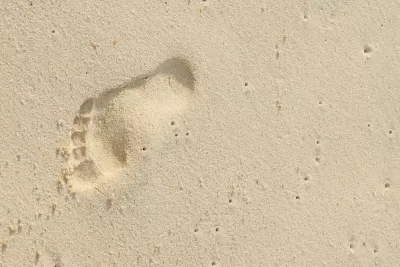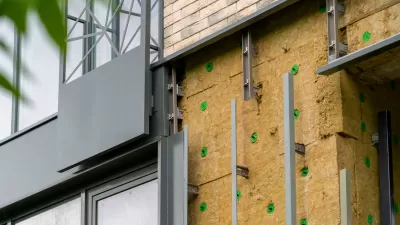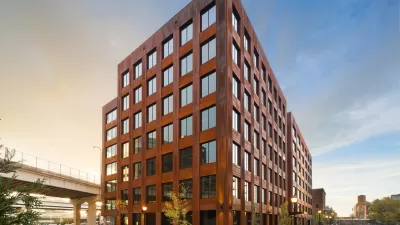Sand has always been an essential part of human life and the rise of cities. but its impact and the world’s dependence on it have been largely overlooked.

Host Roman Mars of the podcast 99% Invisible looks at the topic of sand, at first glance what seems like a boring and inconsequential feature of the world. But, says Vince Beiser, author of The World in a Grain, "Sand is actually the most important solid substance on Earth. It is the literal foundation of modern civilization."
Sand is a fundamental element in concrete, asphalt, and glass, which means most buildings, roads, and windows depend on sand. But we use 50 billion tons of sand every year, and the world supply is starting to run out, says Beiser.
The vast reserves of desert sand are useless since wind-shaped grains are too smooth compared to those formed by water erosion. In addition, the environmental damage that results from taking sand from rivers and oceans is immense. As cities have grown and sand has become a more valuable commodity, violence and corruption have also followed, notes Beiser.
Beiser traces the history of the most influential sand-based product—concrete—from ancient Rome to the invention of reinforced concrete at the turn of last century to the rise of massive cities in developing countries. He says that the sand needed to make concrete is not going to just disappear suddenly, but the efforts needed to extract from the dwindling supply will be more destructive.
While concrete is a valuable building material, Beiser argues that we use too much of it and we need to think about how to consume less in general. Alternative building materials are also part of the solution—bamboo, shredded plastic, recycled tires, and hemp, for example. Mass timber, layered sheets of compressed wood, is another promising option that could potentially provide large quantities of sustainable building materials, reports Mars.
FULL STORY: Built on Sand

Trump Administration Could Effectively End Housing Voucher Program
Federal officials are eyeing major cuts to the Section 8 program that helps millions of low-income households pay rent.

Planetizen Federal Action Tracker
A weekly monitor of how Trump’s orders and actions are impacting planners and planning in America.

Ken Jennings Launches Transit Web Series
The Jeopardy champ wants you to ride public transit.

New Mexico Aging Department Commits to Helping Seniors Age ‘In Place’ and ‘Autonomously’ in New Draft Plan
As New Mexico’s population of seniors continues to grow, the state’s aging department is proposing expanded initiatives to help seniors maintain their autonomy while also supporting family caregivers.

USDOT Waters Down Self-Driving Car Regulations
The agency is reducing reporting requirements for autonomous vehicles and cars with self-driving features, prompting concern among safety advocates who say transparency is essential to the safe deployment of AV technology.

‘Minnesota Nice’ Isn’t so Nice When You Can’t Find a Place to Live
The Economic Development and Housing Challenge Program can help address the scourge of homelessness among Indigenous people.
Urban Design for Planners 1: Software Tools
This six-course series explores essential urban design concepts using open source software and equips planners with the tools they need to participate fully in the urban design process.
Planning for Universal Design
Learn the tools for implementing Universal Design in planning regulations.
Heyer Gruel & Associates PA
Ada County Highway District
Institute for Housing and Urban Development Studies (IHS)
City of Grandview
Harvard GSD Executive Education
Toledo-Lucas County Plan Commissions
Salt Lake City
NYU Wagner Graduate School of Public Service





























